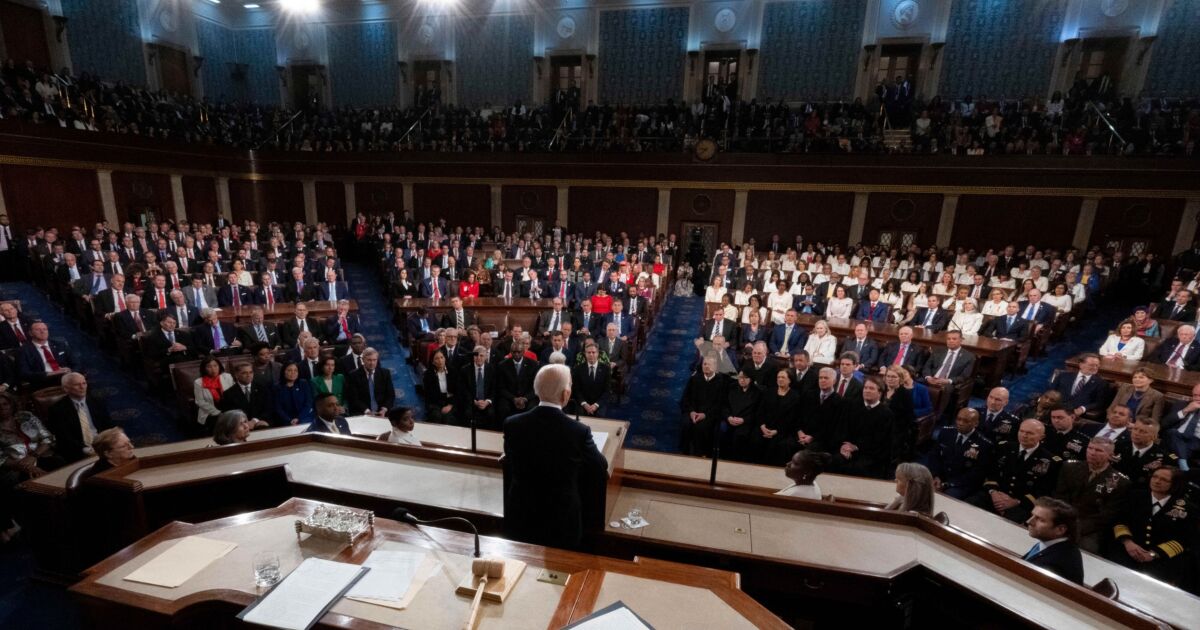Enjoy complimentary access to top ideas and insights — selected by our editors.
The constantly changing numerical definition of “rich” carries direct implications for taxes and planning — and this year’s presidential election offers a choice between competing criteria.
Every year, the IRS tweaks income tax brackets to keep up with inflation, with the latest adjustments assigning the top rate of 37% to individuals earning at least $609,350 a year or $731,200 for couples. President Joe Biden’s State of the Union speech earlier this month and his administration’s budget proposal this week repeated the president’s position that people with incomes of at least $400,000 can and should pay higher taxes. His Republican rival for the second straight election, former President Donald Trump, has signed on to a policy blueprint calling for a simplification of the tax code that would, intermediately, start the top bracket at $168,600 while lowering other taxes and shifting over time to a consumption-based system.
READ MORE: Biden’s $7.3T budget sets up tax fight with Trump
Neither of their proposals stand much chance of being adopted as law in their current form. But they offer a glimpse into potential future policies, with much of the Tax Cuts and Jobs Act expiring at the end of 2025. The complexity of the tax code, and complications like the difficulty of ensuring the solvency of Social Security without raising taxes on those earning less than $400,000, illustrate why it’s tricky to label someone as “rich” based on a specific number.
“There is unlikely to be one single metric that defines who is ‘rich’ in the United States, so a combination of indicators are likely to be more helpful, including measures of income and wealth, along with broader socioeconomic indicators like educational attainment or type of work,” Garrett Watson, a senior policy analyst and modeling manager with the nonpartisan Tax Foundation, said in an email. “That of course is less directly relevant for the purposes of tax policy, which is partly why making the definition of ‘rich’ central to one’s tax policy vision can be challenging to execute on.”
Biden has pledged not to raise taxes on anyone earning less than $400,000 per year and plans to boost the levies asked on those above that amount. That could hike the 24% rate his household paid last year on his presidential salary of $400,000 (plus additional income). The $400,000 cutoff exceeds the $250,000 annual income floor for the definition of “rich” that ex-President Barack Obama set during his administration, as tax policy expert Michael Ettlinger, a senior fellow with the nonpartisan Institute on Taxation and Economic Policy, pointed out in a blog earlier this year.
In 2023 figures under that organization’s calculations, the highest-earning quintile of the U.S. population began at an annual income of $138,000; the richest 5% started at $298,000, and the wealthiest 1% got $737,000, Ettlinger noted. For areas with the highest cost of living, Californians with $352,000 or more in income were in the top 5% and Golden State residents with $862,000 were in the highest 1%, while New Yorkers with $335,000 made the top 5% and Empire Staters with $881,000 got to the 1%. But relying on any particular dollar amount may be missing the point, Ettlinger wrote.
“Whether people meet an arbitrary cutoff for being ‘rich,’ or the people who are affected by a tax increase consider themselves ‘rich,’ is the wrong debate,” he wrote. “For one thing, for people with incomes right at the cutoff level, which is what people often focus on, the tax increases are almost always tiny. More broadly, though, the right debate is not who’s ‘rich’ but who can afford to pay more in taxes. It doesn’t matter if someone with a family income of $800,000 per year thinks they aren’t rich because they can’t quit their jobs and retire to a luxury home on the beach in Malibu. They can call themselves what they want. The point is that they are richer than 99% of the population and can afford to pay more.”
READ MORE: Capital gains hikes at center of Biden’s tax agenda
Biden’s budget proposal would reduce the federal deficit by an estimated $3.2 trillion over the next 10 years through higher taxes for the wealthiest households, pushing up corporate rates and extracting larger portions of capital gains. Critics include the Tax Foundation, which in an analysis pointed out “several unrealistic assumptions” in the calculations and predicted the budget would “decrease economic output and incomes, reduce U.S. competitiveness and further complicate the tax code.” Regardless of whether any of it will ever be enacted, Biden is focusing a lot of his re-election message on calling for higher taxes on the wealthy.
“It’s my goal to cut the federal deficit $3 trillion more by making big corporations and the very wealthy finally pay their fair share,” Biden said in the State of the Union. “Look, I’m a capitalist. If you want to make a million bucks — great. Just pay your fair share in taxes. A fair tax code is how we invest in the things that make a country great — health care, education, defense and more. But here’s the deal: The last administration enacted a $2 trillion tax cut that overwhelmingly benefits the very wealthy and the biggest corporations and exploded the federal deficit. They added more to the national debt than in any presidential term in American history. For folks at home — does anybody really think the tax code is fair? Do you really think the wealthy and big corporations need another $2 trillion in tax breaks? I sure don’t. I’m going to keep fighting like hell to make it fair.”
Trump’s record on taxes includes passage of a giant 2017 tax law that has had a debatable impact on economic growth and a personal rap sheet of criminal and civil fraud cases involving his own wealth and that of his real estate company. He has steadfastly denied any wrongdoing. In terms of policy, the roughly 1,000-page “Mandate for Leadership” platform outlined by the Heritage Foundation and other conservative organizations would bring “dramatic changes” by shifting to two brackets of 15% and 30% before moving to a consumption-based approach, Howard Gleckman, a senior fellow with the Urban Institute and Brookings Institution Tax Policy Center, wrote in a blog last month.
Where the current system “heavily taxes capital and corporate income and discourages work, savings and investment,” a system tied to sales, business transfers, cash flows or other forms of a consumption tax “would minimize government’s distortion of private economic decisions,” the policy blueprint said.
“You’re all getting the biggest tax cuts because we’re doing additional cuts and a brand-new Trump economic boom like you’ve never seen before,” Trump said at a February campaign rally, promising that a second tenure in office would see “tariffs on foreign countries go up” and that “taxes on American workers and families will come down very substantially.”
READ MORE: Planning for the 2024 tax brackets after the tweaks for inflation
The issue of whether financial advisors may need to prepare anyone — wealthy or not — to pay higher taxes will play out in the election this fall. A Supreme Court case could add a further dimension of uncertainty if the justices rule out any notion of a “billionaire tax” with a decision in Moore v. United States this summer. Advisors and their clients will have to figure out whether the federal government considers them rich — no matter how they perceive themselves.
“The challenge with using any strict cutoff for the term ‘rich’ is the idea is more of a spectrum – someone just under the cutoff is not noticeably different than someone above it,” said Watson of the Tax Foundation. “Another challenge is that income and wealth, while often correlated, are not the same concept, and so someone could be classified as ‘rich’ under one definition using income but not another using wealth and vice versa. For the purposes of tax policy, creating a strict cutoff for changing taxes results in tax policy cliffs (changes in tax policy associated with that income level), can make tax policy more complicated to accommodate that cutoff, and restricts revenue collection as it is concentrated on a very small subset of taxpayers.”




